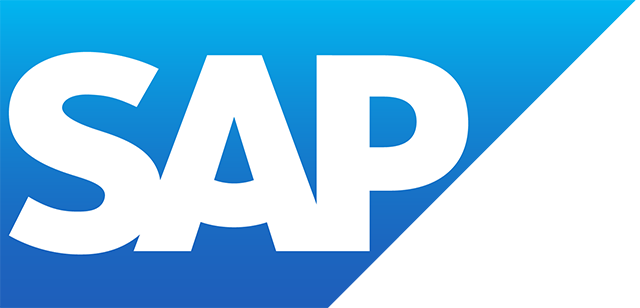SAP POS
Filter By
Browse By
- SAP Analytics and AI
- SAP Application Development and Integration
- All SAP Application Development and Integration
- SAP ABAP
- SAP ABAP Development Tools
- SAP ABAP Test Cockpit
- SAP API Management
- SAP BAPI
- SAP Basis
- SAP BRF
- SAP Business Application Studio
- SAP CMS
- SAP Design Studio
- SAP Development Tools
- SAP DevOps
- SAP EAI
- SAP EDI
- SAP Extension Suite
- SAP Fiori
- SAP Fiori Elements
- SAP Integration Suite
- SAP Low Code Application Development
- SAP Low Code Automation
- SAP Netweaver
- SAP Release Management
- SAP UI5
- SAP Web Application Server
- SAP Web IDE
- SAP Business Process Management
- SAP Center of Excellence
- SAP CIO
- SAP Customer Experience
- SAP Data and Data Management
- All SAP Data and Data Management
- SAP BW
- SAP BW/4HANA
- SAP Crystal Reports
- SAP Data Archiving
- SAP Data Center
- SAP Data Governance
- SAP Data Integration
- SAP Data Migration
- SAP Data Quality
- SAP Data Services
- SAP Data Strategy
- SAP Data Visualization
- SAP Data Warehouse Cloud
- SAP DMS
- SAP Document Control
- SAP EIM
- SAP ETL
- SAP ETL Tools
- SAP HANA
- SAP HANA Administration
- SAP HANA Deployment Infrastructure
- SAP HANA Studio
- SAP Master Data
- SAP Master Data Governance
- SAP MDM
- SAP Enterprise Architect
- SAP Enterprise Asset Management
- SAP ERP
- SAP Finance
- All SAP Finance
- SAP Accounting
- SAP AR AP
- SAP Asset Accounting
- SAP Billing Systems
- SAP BPC
- SAP BRIM
- SAP Cash Management
- SAP Central Finance
- SAP Controlling
- SAP COPA
- SAP Cost Center Accounting
- SAP Currency Risk
- SAP e-invoicing
- SAP FICO
- SAP Finance Automation
- SAP Advanced Financial Closing
- SAP Financial Consolidation
- SAP Financial Planning
- SAP FX Risk
- SAP General Ledger
- SAP Global Tax Management
- SAP Hyperion
- SAP Order to Cash
- SAP Payment Processing
- SAP Profitability Analysis
- SAP Rebate Management
- SAP S/4HANA Finance
- SAP SWIFT Compliance
- SAP Treasury Management
- SAP Universal Journal
- SAP Governance Risk and Compliance
- SAP Human Capital Management
- SAP Intelligent Technologies
- SAP Platform and Technology
- All SAP Platform and Technology
- SAP Business Technology Platform
- SAP Cloud
- SAP Cloud Connector
- SAP Cloud Integration Platform
- SAP Cloud Migration
- SAP Cloud Platform
- SAP Cloud Providers
- SAP Cloud Strategy
- SAP Digital Signature
- SAP Container Platform
- SAP HANA Enterprise Cloud
- SAP Digital Asset Management
- SAP Smart Forms
- SAP HEC
- SAP Digital Integration Hub
- SAP Hyperscalers
- SAP Infrastructure
- SAP Messaging
- SAP Quality and Testing
- SAP Security
- SAP Spend Management
- SAP Supply Chain Management
- All SAP Supply Chain Management
- SAP APO
- SAP Asset Management
- SAP Business Network
- SAP Digital Manufacturing Cloud
- SAP Digital Twin
- SAP EWM
- SAP IBP
- SAP Inventory Management
- SAP Label Printing
- SAP Logistics
- SAP Manufacturing
- SAP Manufacturing Automation
- SAP MES
- SAP MII
- SAP MM
- SAP MRO
- SAP MRP
- SAP Order Management
- SAP Plant Maintenance
- SAP PLM
- SAP Production Planning
- SAP S&OP
- SAP SD
- SAP SPM
- SAP Supply Chain Planning
- SAP Track and Trace
- SAP Transportation Management
- SAP System Administration
What Is Point of Sale?
Point of Sale (POS) represents the customer payment transaction for a brick and mortar or online retailer. As part of the POS, retailers rely on hardware and software to complete the transaction and process the payment.
POS: More than a Transaction
While the POS may appear simply as a transactional activity, it has implications for customer experience and profit for the retailer. Customers want and expect a checkout process that is quick, hassle-free, and easy to navigate.
What Is Point of Sale?
Point of Sale (POS) represents the customer payment transaction for a brick and mortar or online retailer. As part of the POS, retailers rely on hardware and software to complete the transaction and process the payment.
POS: More than a Transaction
While the POS may appear simply as a transactional activity, it has implications for customer experience and profit for the retailer. Customers want and expect a checkout process that is quick, hassle-free, and easy to navigate.
The POS is also critical for understanding customer preferences in terms of product selection and variety. Retailers gain valuable analytical insight into which products are selling, at what time of day, and in what quantity. This can provide better decision-making for the marketing and sales teams.
Lastly, integration between the POS, inventory management, and operational systems is critical for maintaining supply and demand balance and identifying potential revenue opportunities. Replenishment is essential for retailers to ensure the product is on the shelf where and when customers need it. Data from the POS should also be shared with suppliers to collaborate on product promotions and new product introductions.
SAP Customer Checkout Application
SAP’s point of sale solution is SAP Customer Checkout. According to SAP, the following are key POS capabilities of the application:
- Manage sales, returns, payments, coupons, and gift cards with a central POS system
- Access real-time reports, control sales and financial results, and extend and scale the application with flexibility
- Integrate with SAP S/4HANA or other ERP systems, or use as a stand-alone application
Key Consideration for SAPinsiders
- Case Study: AGRAVIS Transforms Its POS System for the Future. In this SAP case study, German agricultural trading company AGRAVIS needed to replace its legacy POS system to meet new cash register regulations and future POS transaction requirements. The company wanted a solution that integrated with its current software landscape, but also created a single source of truth of real-time sales and inventory data. AGRAVIS also required a solution that enabled capabilities for future omnichannel retailing. It chose the SAP Customer Checkout application with native SAP S/4HANA integration and linkage to existing legacy warehouse management systems.
A vendor in the point-of-sale space includes: Verbella.
365 results
-

 Premium
Premium
Improve Operational Effectiveness by Properly Loading and Monitoring SPL Data
Reading time: 24 mins
Review the operational considerations and the effective use of sanctioned party list functionality in SAP BusinessObjects Global Trade Services. See how to index business partner records effectively and manage your content and operational activities. Key Concept Screening business partners is controlled by three factors: record changes in the source system, content updates, and time. Record...…
-

 Premium
Premium
Key Considerations for Implementing R/3’s Succession Planning Module
Reading time: 10 mins
R/3’s Succession Planning functionality, which helps organizations identify internal talent, requires a commitment from the business side of the organization. The continual update of detailed employee data is essential for a successful implementation. The author provides tips for designing or updating your succession planning strategy. Having the ability to identify internal talent is a goal...…
-

 Premium
Premium
How to Enhance the Experience of End Users Working in Financials Using Entry Pages and Side Panels
Reading time: 15 mins
Discover how to include entry pages that contain key information for the end user’s daily work in the user’s roles. See how to attach side panels to those transactions that the user works with within that role. Understand how to use the CHIPs that SAP delivers within the entry pages and side panels and how...…
-
-

 Premium
Premium
How to Use Resource Network Planning in SNP Optimizer Planning
Reading time: 14 mins
Resource network planning is used to describe the physical relationships between resources in a plant. It also shows the product flow between resources. The limitation of this functionality is that Supply Network Planning (SNP) tools are unable to read this logical sequencing while planning. SNP planning is purely based on resource and material availability. See...…
-

 Premium
Premium
From Demand Planning to Demand Signal Management: Pros and Cons of Five Demand Management Solutions
Reading time: 10 mins
This article compares demand management options in five SAP solutions and discusses Demand Signal Management (DSiM), a new, SAP HANA-based solution, including a case study of a company that adopted the technology. Key Concept Demand Signal Management (DSiM) is an SAP HANA-based solution that helps in sensing demand from a variety of data sources, such as...…
-

 Premium
Premium
How to Plan and Manage a Successful Payroll Parallel Run
Reading time: 13 mins
Parallel runs are often the most demanding phase of any HR and payroll implementation. Yet little formal advice is available and most users seem to learn through experience only. This general overview of the process shows that detailed planning, setting expectations, and good communication are the keys to a successful parallel run. Key Concept A...…
-

 Premium
Premium
Use Business Place Functionality to Cater to Branch-Wise Automatic Payments
Reading time: 14 mins
Learn how to use business place functionality in an SAP Financial Accounting (FI) system to pay invoices branch-wise. Discover how business place can help a local branch of an organization meet its requirement to pay its own invoices through automatic payment programs for audit trails. Key Concept SAP introduced business place as a reporting entity...…
-
-

- SAP APO
 Premium
Premium
Meeting Demand with a Constrained Supply Using Product Allocation in SAP APO Global ATP
Reading time: 22 mins
Learn the process flow of how product allocation can be used in SAP Advanced Planning and Optimization (SAP APO) Global available-to-promise (Global ATP) to meet customer requirements by managing the supply of scarce products. The system can perform availability checks in conjunction with product allocation checks. Key Concept Availability checks, also known as available-to-promise (ATP),...…
-

- SAP APO
 Premium
Premium
How to Carry Out Data Extraction from a Planning Area in SAP APO
Reading time: 15 mins
Learn the process flow of how data can be extracted from a planning area in Demand Planning to an InfoCube in the SAP Advanced Planning and Optimization (SAP APO) database. Follow a step-by-step procedure to understand the prerequisites, importance, and configuration steps with the help of an example case study. Key Concept Demand Planning in...…
-

- SAP Payment Processing
 Premium
Premium
Uses of the Treasury Payment Program
Reading time: 25 mins
Learn about the different types of payments that can be made through SAP’s Treasury payment program. Key Concept Treasury departments execute various types of payments, such as bank account transfers, trade-related payments, and one-off payments. These types of payments can be made by a treasury department using SAP’s Treasury payment program (formally named the Payment...…
Become a Member
Unlimited access to thousands of resources for SAP-specific expertise that can only be found here.
Become a Partner
Access exclusive SAP insights, expert marketing strategies, and high-value services including research reports, webinars, and buyers' guides, all designed to boost your campaign ROI by up to 50% within the SAP ecosystem.
Upcoming Events
Related Vendors
Your request has been successfully sent


